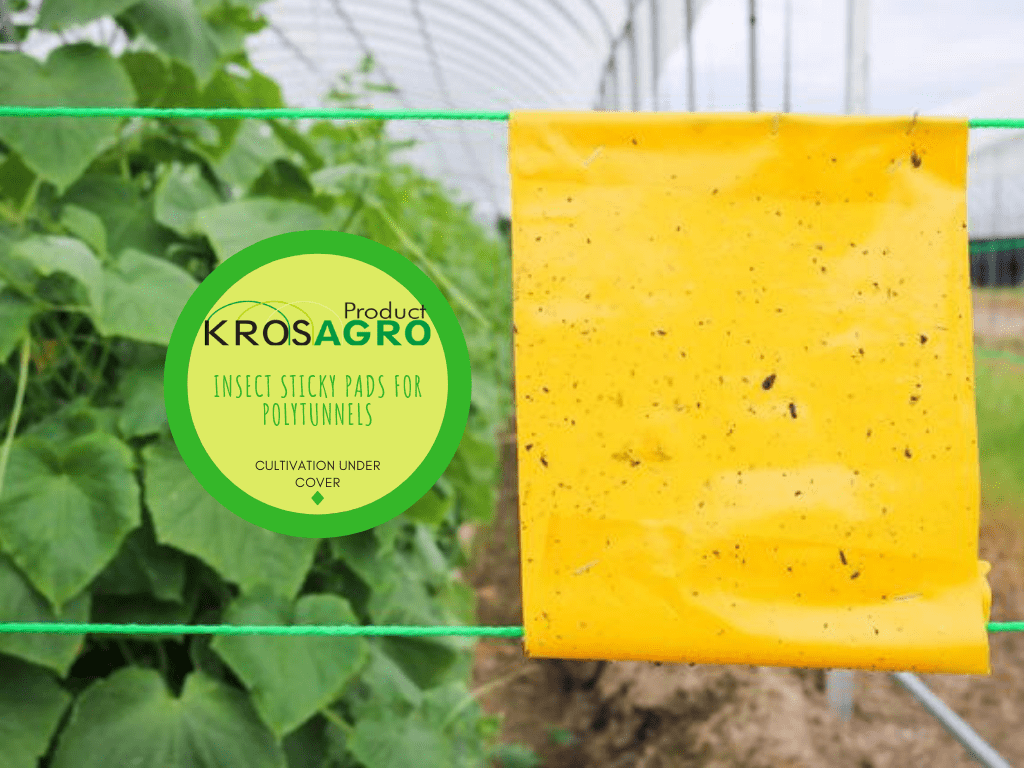Insect sticky pads for polytunnels are used to control and reduce the amount of pests when cultivating crops under cover. They can be adapted to almost any cultivation methods. They can be found in greenhouses, orchards, etc, for this particular purpose. In this Krosagro article, we will review the topic of sticky pads in polytunnels – which ones to choose and how to use them?
Contents
Insect sticky traps for greenhouse
Using these panels enables control and removal of harmful insects. It also contributes to limit chemical product treatment. They are mainly effective for whiteflies, aphids, phytomyza obscurella, etc. On average, they will have to be replaced every three or four months, or as soon as the panel is filled with insects.
Application of sticky traps under cover
As far as farming is concerned, these panels help monitor pests on crops. With the knowledge of the threat, farmers or gardeners can implement the appropriate methods of extermination. As certain species have a quick reproduction cycle, it becomes necessary to regularly check which insects get caught on the trap. If one species stands out, it is a sign that preventive measures must be taken.
Insecticides for gardens and plantations
The special glue that covers the screens does not contain any harmful components. It is designed not to affect the substrate. Usually, one panel is enough for 20 m2. Density of devices as well area to be treated may change. Everything will depend on the insect population. If it gets worse, one has to multiply the boards.
Types of sticky boards
There are many different products on the market. In addition to price, board colors can also vary. Some colors are better suited to attract certain parasites. Within the range on offer, you can find:
• yellow sticky pads – the most popular product, used to trap and also reduces population
• white sticky pads – installed mainly in orchards, where they contribute to reduce and also monitor insect growth rate, such as apple, plum and pear sawflies, as well as raspberry beetles. Regarding vegetable crops, cabbage flies and cherry fruit fly also pose problems.
• blue pads – these are much less common, you can see them in nurseries and plant production sites. They target thrips, considered a serious threat to seedlings.
How to use sticky boards?
It is recommended to place these anti-insect sticky boards 25 cm above plants in the greenhouse. As crops grow, traps are raised as well. Adult insects fly around, looking for breeding partners. Placed too high, boards will not fully perform. In greenhouses and hobby tunnels, they are fixed on the frame, using special hooks.
Crop ventilation in a greenhouse
Ventilation, through which pests can find a way in, is a critical device for any growing facility. In the standard version of our garden tunnel, air circulation is achieved by opening one or both doors, if these feature on both sides of the polytunnel. However, they do not include any “filtering” system. Multi-vegetation models, with double lateral openings, are equipped with insect net. The small mesh membrane will make it difficult for insects to get access into the greenhouse. To minimize the amount of pests indoor, it is worth placing traps near vents, openings and doors.
